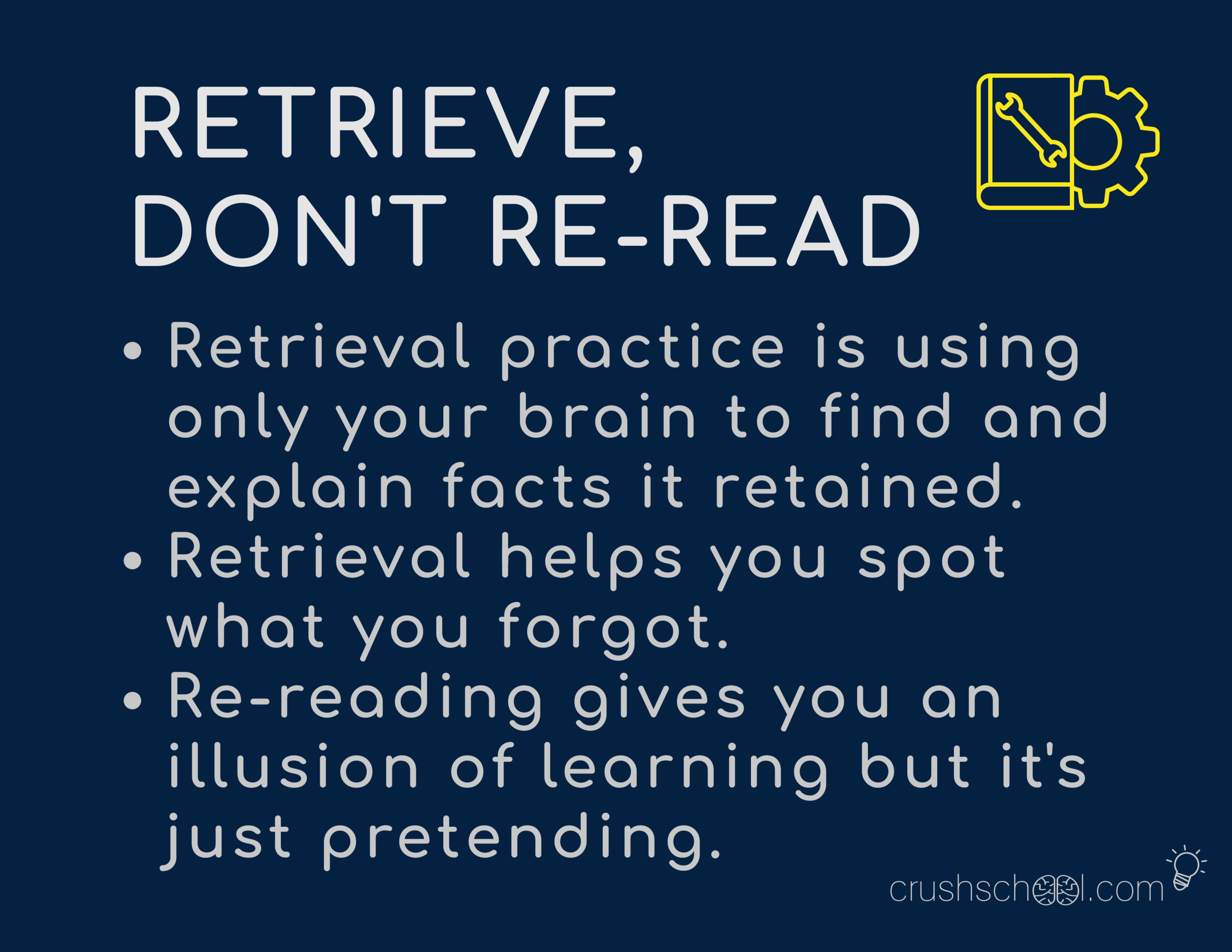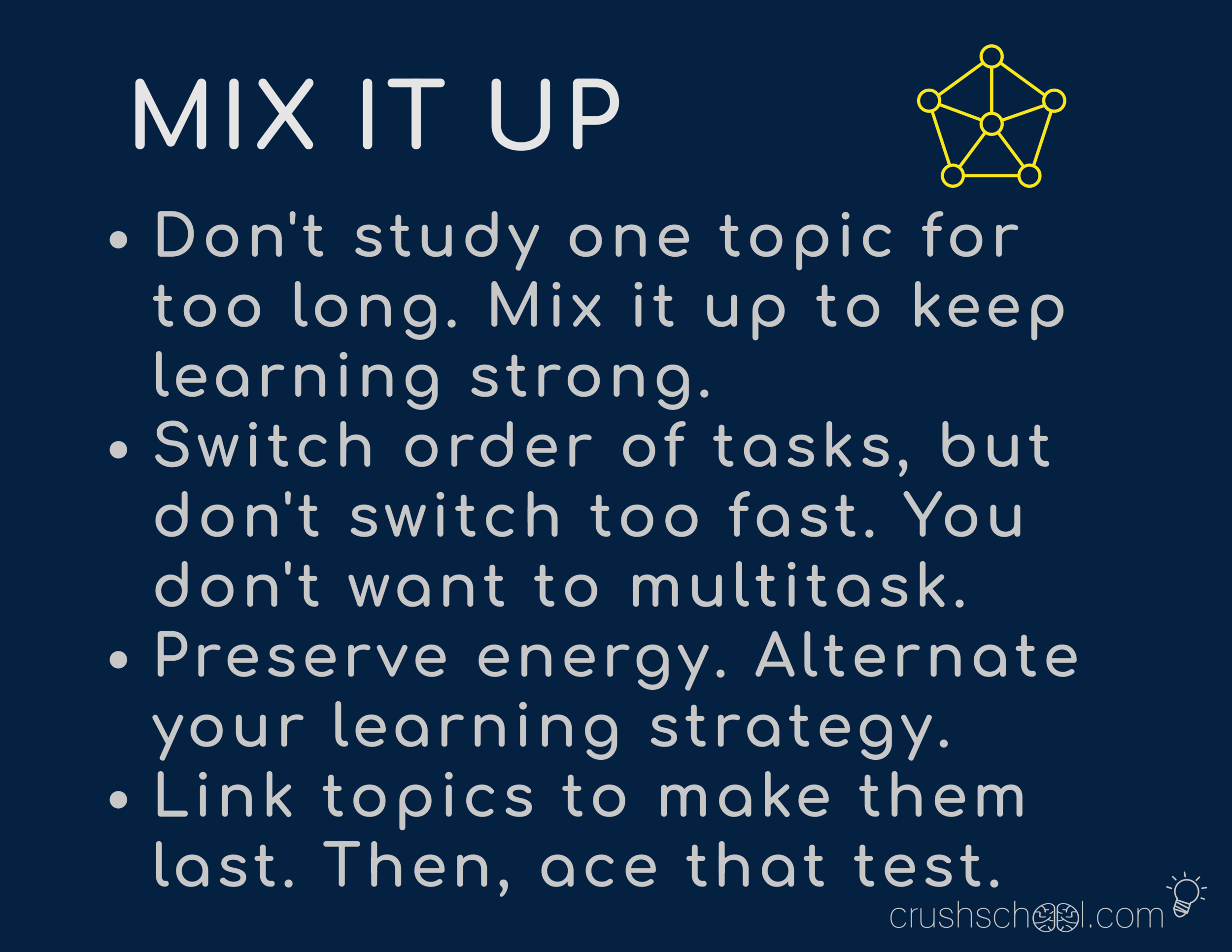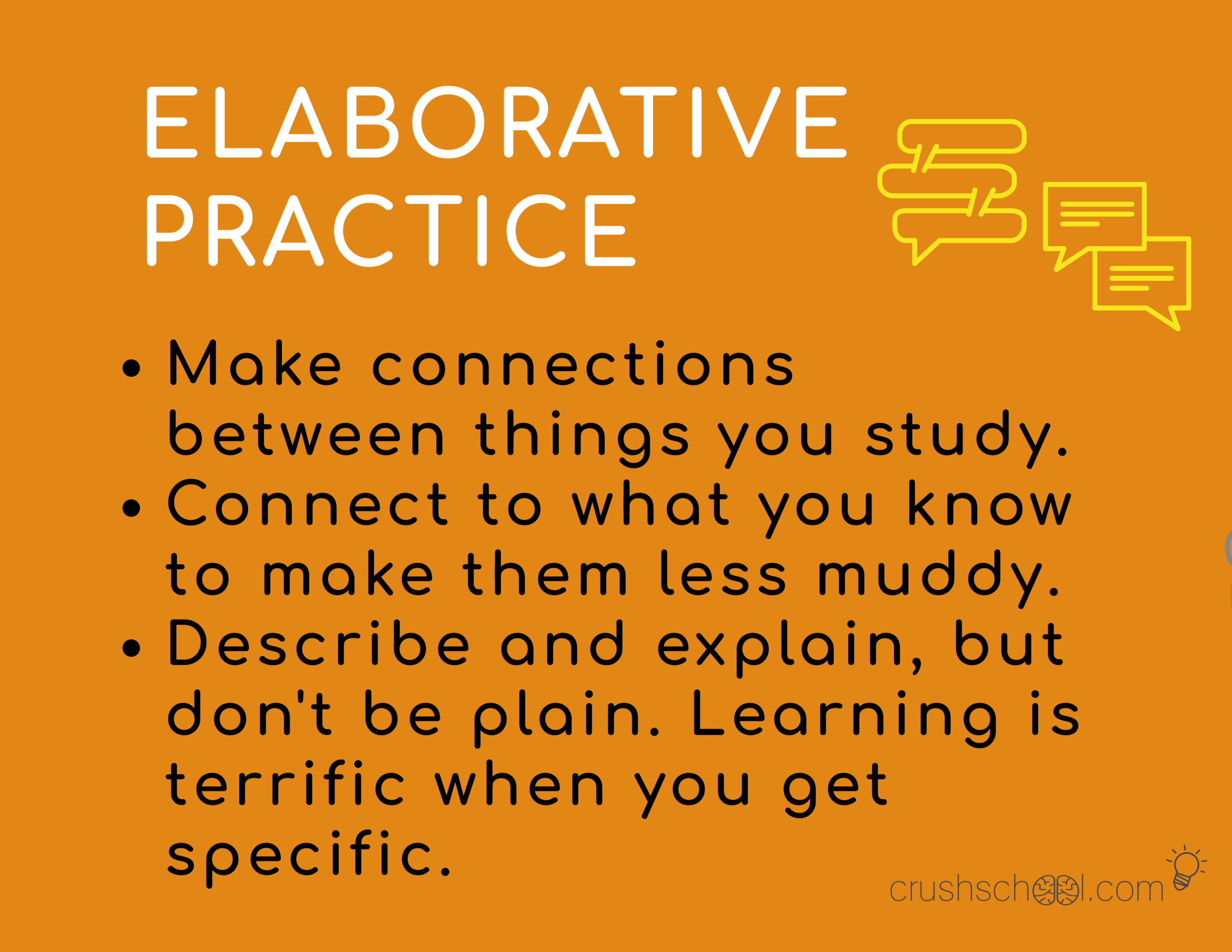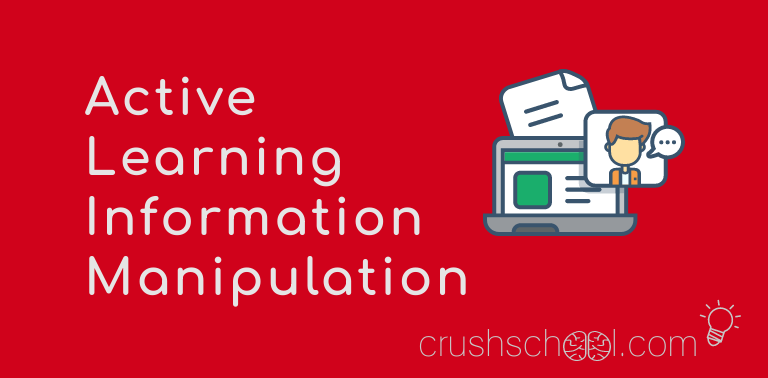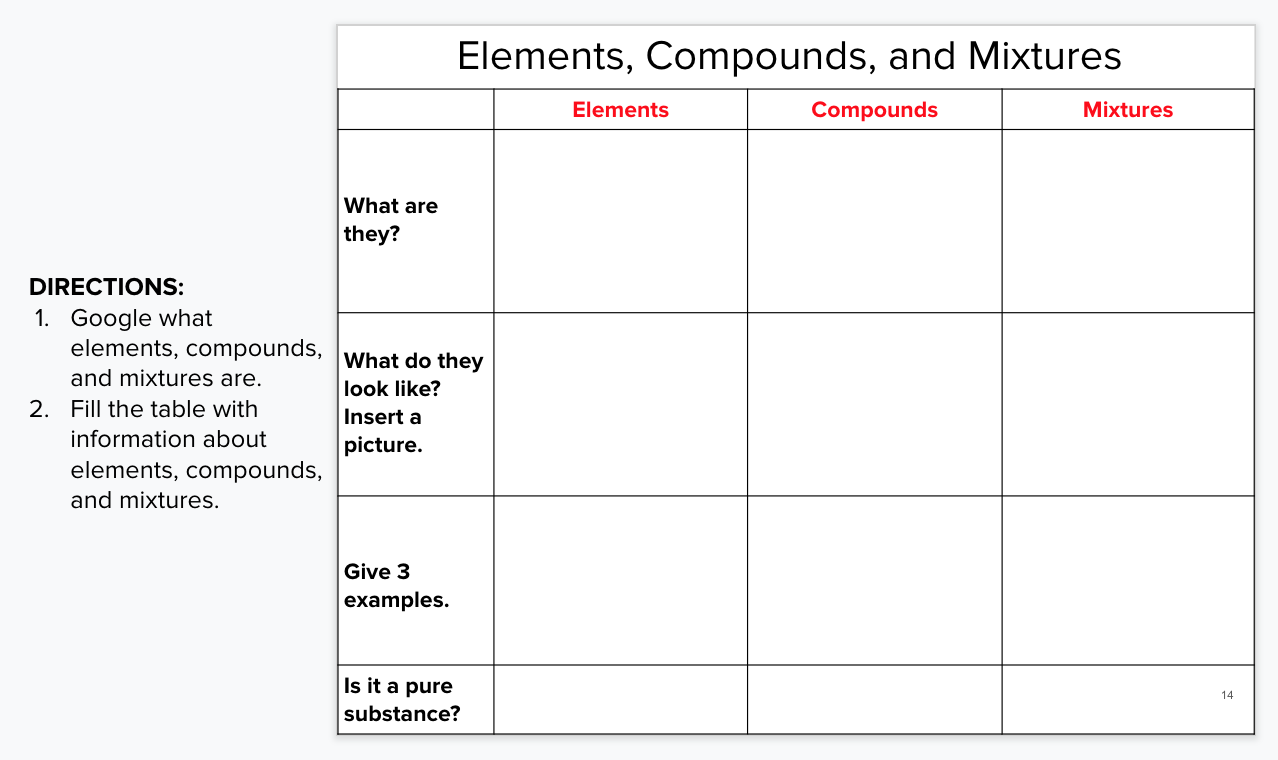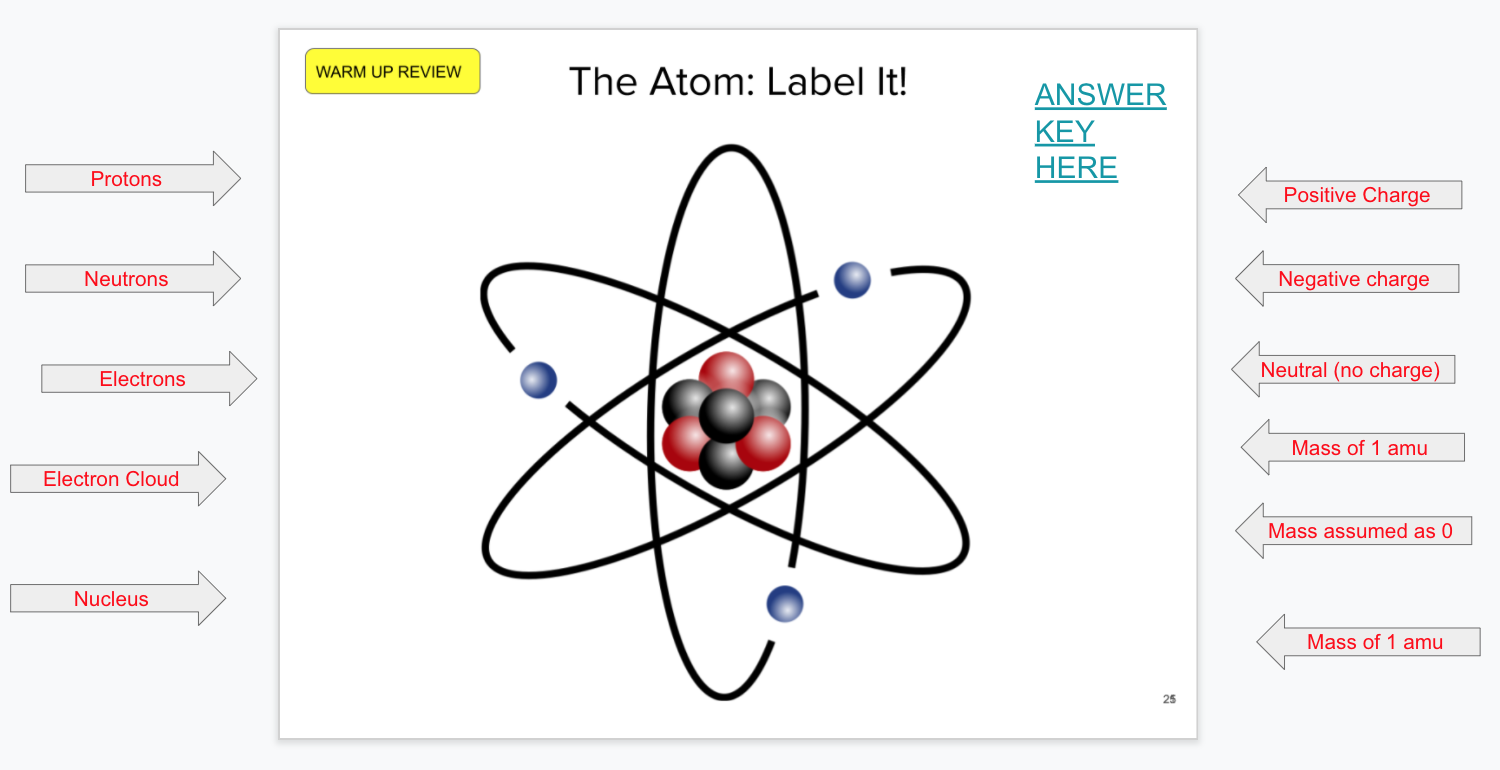3 Strategies to Help Students Learn More Effectively
Warning! This article is full of cheesy and rhymy graphics designed to promote nerdy and sciency research-supported learning strategies. It is my hope they are also catchy, because coercing our students just ain’t the way. Read at your own risk of being slightly entertained and mildly amused.
“Learning is not attained by chance. It must be sought for with ardor and attended with diligence.”
I’ve been working on a way to show the “neuroscience of learning” to students in a more approachable, memorable, and useful way recently. Coveting to combine compactness with completeness I condensed research-based effective learning to six strategies: Active Learning, Teaching, Visualizing, Smart Practice, Chunking, and Mistake Making, which be viewed as a set of micro skills - smaller but integral parts of the macro “Effective Learning” skill.
Along with their descriptors, which include other best practices such as retrieval, interleaving, elaboration, and dual coding, these six strategies can be practiced in the classroom to help students learn more effectively and outside of it to help them study with more intention.
They can be used in any subject, field of knowledge, or profession to learn anything. In fact, if knowing how to approach new learning strategically, and how to develop an understanding of new concepts efficiently, and how to transfer information from working to long term memory effectively are the only three skills our students leave high school with, then we have done our job.
Of course, the absurdity of the above statement is only dwarfed by its impossibility, because if students indeed leave high school knowing how to do these three things, then they’ve left it with a lot more know how and many more skills.
And if they know how to learn… the outer space is the limit. Let’s take a look at what we, the teachers can do to help them lift off.
1. Promote Active Learning
“Being a student is easy. Learning requires actual work.”
The key to learning how to learn actively is not explaining and showing students how to use active learning, but using active learning purposefully in the classroom to show what it looks like and how it’s done.
If students experience the benefits of active learning at school they will be more motivated and have a greater understanding of how to apply various active learning strategies in their own studies. In this way, classroom learning can become a template for learning at home.
The design of classroom activities that engage students is active learning is necessitated by years of mind programming resulting from traditional teaching methods. Direct instruction is effective when done right, but lecture-based teaching followed by drill and kill worksheet or packet data entry many students have been exposed to throughout their schooling has programmed many passive learning (oxymoron alert!) habits.
Point is… If you just tell them to do it they’ll revert to what they’ve always done, because traditional ways are “learned helplessness,” and while ineffective, they‘re comfy and easy.
Admittedly, active learning is harder - it challenges the mind and requires more conscious effort. But that is how the human brain learns. Conversely, comfy and convenient does not raise the brain’s alertness to the level necessary for long-term encoding. Passive learning is a mindless, going-through-the-motions waste of brain power and time.
Focus and Engagement
While we might want to have outer space aspirations for our students we don’t want them to “space out” while learning. Besides, that stupid look that one football player has on his face while imagining Scarlett Johansson, I mean Black Widow feeding him cupcakes… that’s not a good look.
Focus and engagement are crucial for making most of the “learning” piece of “active learning.”
The things on the image above are worth mentioning more than once and posting on the classroom wall as a constant visual reminder.
Active Learning Strategies
Active learning is the type of learning that involves “doing” - manipulating the information being studied or creating new content with it - anything that allows the learners to apply it in various ways to learn it. When defined this way, it’s easy to see that all of the strategies discussed below are active learning strategies and their thoughtful and strategic use exemplifies metacognition.
It’s easy to talk about what discussing, summarizing, drawing, and visualizing are but the best way to help students make their learning conscious is to explain the science of why and how active learning works. Much of it has to do with creating “desirable difficulties,” or conditions and tasks that challenge the mind to work harder and produce more. It is easier to copy information from a digital slideshow to a paper notebook than to create a comic strip that tells a story that uses the information from the slideshow in an innovative way. But it is the latter way that’s more memorable and effective in the long term. The additional processing leads to stronger neural connections.
Active Note Taking
Research suggests that note taking does little for memory due to the often all-consuming demands of the process of putting pen to paper while trying to watch and listen at the same time. And while capturing the key points and important facts from a lecture, slideshow, or a video has its benefits, it’s important to add a processing component to promote encoding of information when taking notes.
Enter active note taking. There are various strategies to do it, but the common element is to use retrieval.
First, ask your students to paraphrase as much as possible. This means decreasing the amount of content and slowing lectures down to allow extra time for (1) modeling paraphrasing via think-alouds (read a line on the slide and paraphrase it for your students) and (2) student use and development of the skill of paraphrasing efficiently and effectively.
Second, ask students and give them class time right after the lecture for retrieving what they remember using summaries, generating and writing down questions related to the content, and strategically leaving and later filling in the empty spaces with examples and visuals of what they’re learning (see the Make Notes section of the first note taking strategy on the slide above).
This is worth the time because many of your students need practice paraphrasing (read: they have no idea how to paraphrase) and they will become better learners as a result.
2. Allow For Smart Practice Opportunities
“Work on Purpose, Play on Purpose, Rest on Purpose. Do not let yourself or anyone else waste your time.”
Some 8 years ago, a father of a very hard-working female student straight up asked me during conferences: So what’s the trick to doing this chemistry thing? I mean, Joanna (totally not her name) spends hours each day on chemistry and keeps failing the tests. I remember offering before or after school help and pointing him to a few online “enrichment” resources but I realize now that she might have been going at it hard but not practicing smart. Joanna didn’t know how to learn effectively.
Maybe she re-read her notes multiple times or kept solving problems while looking at the examples I gave in class. Whatever it was, it was because I did not teach her how to learn smart and use retrieval.
Retrieval Practice
Yes… I have a sneaking suspicion Johanna was just pretending that she was learning. Not that she didn’t want to learn. I know she did. But she was tricking her mind into thinking she was learning all the while the information remained in her short-term memory or working memory, which is often the case with analytical problem solving in which scaffolds are never removed during practice.
She did not know about retrieval practice - a kind of intentional practice that challenges the brain to recall previously learned information and leads to the formation of neural pathways between the cortex and and hippocampus, which is how scientists think long-term memories first form.
The authors of Make It Stick: The Science of Successful Learning, a book that looks to inform teachers and learners on why common and counterproductive study habits and learning routines do not work and what strategies should be used instead, give and describe several tips for teachers to use to help their students become stronger learners. Explaining how learning works and teaching how to study figure prominently, because in their research they found that many students lack effective study skills as they do not understand how to the human brain learns. Thus, to help our students learn our subjects we must continuously teach them how to learn and remind them how to study for success.
One of the best ways to help students understand retrieval practice is to ask them to imagine they’re in a school play or in a Hollywood movie they wrote the script for and are directing.
As actors, they have to memorize their character’s lines so they must remove the script and rehearse from memory.
As writers, they have to create an engaging and memorable story the audiences can appreciate.
As directors, they have to be able to explain and elaborate on the key elements and nuances of the story and the emotions it should evoke to everyone involved in the production of the movie (actors, set designers, costume designers, makeup artists, sound and light crews etc.) to make it not just convincing, but impactful in some way as well.
If you get some “that’s doing too much” comments you must be frank and agree and add that indeed this is the only work worth doing. Otherwise, it’s just “going through the motions” and learning nothing which is synonymous with soul suicide. That’s destination heavy, I know… But Fitty would agree.
Spaced Practice
Cramming is bad. Spaced practice is good. But what’s all the hoopla?
it’s about myelination - the thickening of the connections between neurons that happens when we retrieve and apply a concept or a skill over and over.
Once our mind encodes something into long-term memory it becomes harder to remove from the brain. But it can still be removed if we don’t use spaced practice. Cramming is the antithesis of spaced practice for this very reason. Most of what we cram never makes it to the brain library, because we do not use this information enough to make it seem sufficiently important (and useful in our survival efforts) for our brain to keep.
But if we periodically recall and use that which we have learned, we get to keep it. The information or skills we use the most become “our thing” — passion or profession or both. Over time, as the information is continually processed we can become experts. As the myelin sheaths surrounding the axons that connect the brain neurons responsible for processing of certain chunks of knowledge grow thicker with fat and protein we stop merely defining and start using this knowledge to create and innovate. With continual use of this knowledge and myelination, our brain’s processing speed increases as well. This is what getting smart looks like.
The hard part is getting our students to apply spaced practice to topics they’re simply not crazy about. If you mention myelination you might lose the non-nerdy herd. Just remember this: everyone wants to be faster, smarter, and better even if they’re too cool to admit it and spit it.
Mixing It Up or Interleaving
Interleaving can be used as short-term spaced practice when used to alternate between separate topics or subjects being studied. In this way, it’s a great vehicle to use retrieval practice, because the learner can go over several separate concepts and come back to each in random order to retrieve information that describes each previously reviewed concept.
It is also important to help our students understand why they need to mix up the order of tasks while studying. For example, it is more beneficial to deviate from chunking and solving similar problems together in math, and alternate between different kinds of problems, as doing so promotes critical thinking and prevents robotic repetition of procedures. The second benefit is that students will be ready for randomly ordered tests.
Another way to mix it up is to alternate learning strategies. Using a variety of strategies during a study session increases stamina, because students avoid the monotony of doing the same thing for too long. For example, a student might choose to watch and summarize a short video to learn the first concept, Google and discuss the second concept with a peer, and then draw a Venn diagram to compare and contrast the two concepts. This promotes linking of concepts and forming information chunks.
For their part, teachers can structure classroom activities in a similar way to enhance the student learning experience and increase motivation by providing more active learning opportunities.
3. Ask Students To Teach
“Those who know, do. Those that understand, teach.”
And those who teach, understand better. They also learn more. Teaching is one of the best ways to learn because it forces the teacher to gain enough competence in the topic she must teach to allow her to elaborate on it, give examples of it, and apply it in a useful way. It is not necessary for the teacher to be an expert on the topic - she just needs to prepare, and the better she prepares the better she’ll be.
Putting this mantra into practice with our students allows them to use the “teach it” strategy to learn more effectively and become better learners.
Elaborative Practice
The main purpose of elaboration is to link individual pieces of information we are learning to each other and the information already stored in the brain to aid future recall and increase understanding of the new concepts. Providing as much detail as possible when explaining each new concept to someone else is especially effective when we use commonplace examples, analogies, or metaphors to elaborate on concepts. This is something effective teachers do during direct instruction and students can take advantage of when they study.
But students don’t have to teach others to benefit from elaboration. They can teach themselves using elaborative interrogation - a study strategy that, despite its evocative name, involves little psychological torment and a lot of questioning and explaining. The strategy is akin to Socrates teaching Plato; rather than providing answers, the teacher poses questions and the student seeks answers to these questions. Except that during elaborative interrogation Socrates and Plato are one and the same person — the student asks and answers his own questions.
For example, a student can take a major topic covered in chemistry such as ionic bonding and generate a list of questions about it. How does ionic bonding occur? What kinds of elements are involved in ionic bonding? How do atoms become ions? Why do ionic bonds form? What are the some properties of ionic bonds? How is ionic bonding different from other types of bonding? Then, the student can go from question to question providing as many details as she can remember to answer each question. This helps her teach herself by recalling facts she already knows and finding knowledge gaps she must still fill. Elaboration ups a student’s learning skill.
Leveling Up The Learning Skill
Teachers are not smart in their subject because they studied it in college. College was just the beginning. Teachers are smart in what they do because they repeatedly teach it using retrieval practice, interleaving, spaced practice, dual coding, reflecting on and correcting mistakes they make, and yes - elaboration.
See if this seems familiar when teaching that one complex concept many students struggle with year after year:
You teach it. Some students get it. You teach it another way. A few others understand. You show a different example to a small group. The dear-in-the-headlights look disappears from two more faces. You work through a new problem with a student individually. It’s beginning to click. When the day is done you look at what went well and how you can improve. You look at alternative ways to simplify it; to break it down even further so they can see it. Then you teach it again hoping one or two or three more find it doable.
If learning the shit out of something had a definition, teaching would be it.
Even if you knew it well before, you understand it two- or three-fold now, because you forced yourself to look at it in many different ways, from many vantage points and produced multiple ways of presenting and explaining this new concept or new way of problem-solving. You probably had a few new realizations along the way too.
Perhaps we can’t afford the class time required to let our students mimic this sort of in-depth learning by teaching for every concept we must cover. But maybe we can give them opportunities to teach each other while in class from time to time? Or maybe keeping focus on a few but key concepts and learning the shit out of those would serve our students best? Each teacher must decide themselves, because what we want to do and what we can do might not match.
Key Takeaways To Help Students Learn More Effectively:
Use Active Learning in the classroom and teach students how to study effectively.
Teach Smart Practice and explain how to do Retrieval Practice, Spaced Practice, and Interleaving. Be transparent and tell students that Smart Practice is harder than traditional, ineffective studying, and explain WHY IT WORKS (it rewires the brain).
Teaching leads to deeper understanding. Create assignments that force your students to Elaborate and explain how they can use Elaborative Interrogation on their own.
References:
Brown, Peter C. (2014). Make it stick: the science of successful learning. Cambridge, Massachusetts: The Belknap Press of Harvard University Press.
If you enjoyed this post or found it helpful consider signing up for my newsletter below.
Hi! I'm Oskar.
I teach, write, and create to make teaching easier and learning simpler.
BOOKS
- August 2024 2
- July 2024 2
- June 2024 1
- October 2023 1
- September 2023 3
- August 2023 6
- July 2023 6
- July 2022 2
- June 2022 1
- November 2020 3
- October 2020 3
- April 2020 1
- March 2020 5
- July 2019 1
- June 2019 1
- April 2019 1
- January 2019 1
- November 2018 3
- October 2018 2
- September 2018 1
- August 2018 8
- July 2018 11
- June 2018 4
- May 2018 5
- April 2018 2
- March 2018 4
- February 2018 5
- January 2018 3
- December 2017 1
- November 2017 5
- October 2017 7
- September 2017 6
- August 2017 5
- July 2017 3
- June 2017 10
- May 2017 7
- April 2017 7
- March 2017 15
- February 2017 12
- January 2017 13
- December 2016 15
- November 2016 8
- October 2016 7
- September 2016 12
- August 2016 14
- July 2016 10
- June 2016 13
- May 2016 10
- April 2016 8
- March 2016 5
- February 2016 7
- January 2016 6
- December 2015 5
- November 2015 8
- October 2015 2







